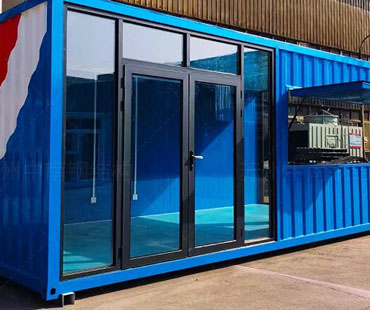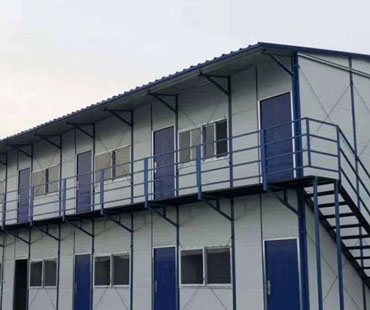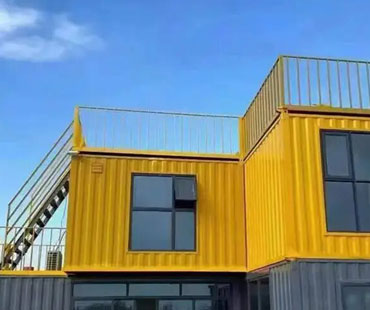In recent years, the concept of mobile living has gained remarkable traction, driven by a blend of economic, environmental, and technological factors. One of the most innovative and sustainable solutions to this trend is the use of shipping containers as living spaces. These metal boxes, originally designed for transporting goods across the globe, are being transformed into stylish, functional homes, offices, and even community spaces. This article explores the rise of container life, its benefits, challenges, and the future of mobile living.
1. The Allure of Container Living
A. Affordability and Accessibility
One of the primary reasons for the popularity of container living is affordability. Traditional housing markets have become increasingly inaccessible due to rising property prices. Shipping containers offer a cost-effective alternative, with the potential to create livable spaces at a fraction of the cost of conventional homes. A single shipping container can be repurposed into a comfortable living space for less than the price of an average apartment in many urban areas.
B. Sustainability
Sustainability is a key driver behind the container living trend. By repurposing used shipping containers, individuals and developers can reduce waste and minimize the carbon footprint associated with new construction. Furthermore, container homes can be designed with eco-friendly features such as solar panels, rainwater harvesting systems, and energy-efficient appliances, making them an attractive option for environmentally conscious consumers.
C. Flexibility and Mobility
Container homes offer unprecedented flexibility. They can be easily transported and relocated, allowing residents to adapt their living situations according to their lifestyle needs. This mobility is particularly appealing to digital nomads, remote workers, and those seeking a minimalist lifestyle. Whether placed in urban settings, rural landscapes, or even off-grid locations, container homes can be tailored to fit diverse environments.
2. Innovative Designs and Uses
A. Customization and Creativity
The versatility of shipping containers allows for an array of design possibilities. Architects and designers are embracing creative approaches to transform containers into modern living spaces. From minimalist studios to multi-story homes with striking aesthetics, the potential for customization is virtually limitless. Interior designs can incorporate open floor plans, natural lighting, and modern furnishings, creating inviting and functional living environments.
B. Alternative Uses for Containers
Beyond residential living, shipping containers are being utilized for various purposes. They serve as pop-up shops, cafes, and restaurants, offering unique retail experiences that capture the attention of consumers. In addition, container-based community projects, such as affordable housing initiatives and homeless shelters, are emerging in cities worldwide, demonstrating the potential of containers to address social issues.

3. Challenges of Container Living
A. Zoning and Legal Regulations
Despite the numerous advantages of container living, challenges remain. Zoning laws and building codes can pose obstacles for container homes. Many areas lack specific regulations for unconventional housing, leading to uncertainties regarding legality and safety. Advocates for container living are working to influence policy changes and develop clearer guidelines to facilitate the acceptance of these innovative structures.
B. Insulation and Climate Considerations
Shipping containers are made of steel, which can pose insulation challenges. Extreme temperatures can impact comfort levels within the container, necessitating additional insulation and climate control solutions. Homeowners must invest in proper insulation materials and energy-efficient systems to create a comfortable living environment.
C. Limited Space
While container homes can be designed effectively, they still present space limitations compared to traditional houses. Clever design and strategic use of space are essential to maximize functionality and comfort. This can be particularly challenging for families or individuals with significant storage needs.
4. The Future of Container Living
The future of container living looks promising, with increasing acceptance and innovation in this space. As urbanization continues to rise and housing shortages become more prevalent, container homes may provide viable solutions. The trend is likely to grow, with more architects and developers exploring container-based designs and communities.
Moreover, the integration of smart technology into container homes can enhance their appeal. Smart home systems that optimize energy use, improve security, and provide convenience will likely attract a broader audience. As sustainability becomes a focal point of modern living, container homes will continue to evolve, incorporating green technologies and sustainable practices.
5. Conclusion
Container life represents a revolutionary shift in how we perceive and approach housing. By embracing the potential of shipping containers, individuals and communities can create affordable, sustainable, and flexible living spaces that cater to modern lifestyles. While challenges exist, the growing trend of container living highlights the need for innovative solutions in an ever-changing world. As we move towards a future where mobility and sustainability are paramount, container homes will undoubtedly play an essential role in shaping the landscape of modern living.


